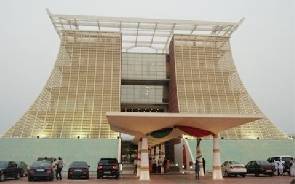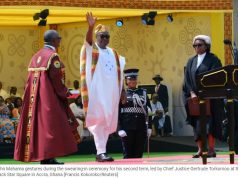The many campaign promises by all the major parties notwithstanding, the 2016 elections were fought principally over only a few critical issues, and of these issues austerity (cost of living) and corruption/waste stood out.
Because austerity and the macroeconomic challenges underlying it are technically quite complex, the majority of Ghanaians have tended to focus more on the flamboyant spectacles of corruption and waste this nation has seen in recent times: GYEEDA, one Judge one Goat, Smarttys, SADA, the Brazil 2014 circus, Ameri, etc.
It comes as no surprise therefore to see the proposed “Special Prosecutor Office” take such a center-stage in national conversation this early in the new administration’s life. The ruling party’s manifesto emphasis on the office as a major antidote to the problem has clearly earned it the attention of those at the very top.
It is evident however from all the legal debate that has ensued since the inauguration of the new President that new laws would be required to put the idea of the Special Prosecutor into practice. After such laws are passed, more time is required to recruit, staff, and resource the personnel in the new entity. Should even the new Prosecutors decide to use the fast-track courts in their pursuit of those who have embezzled or mismanaged public funds, due process and expensive lawyers can drag cases out for months. In short, it is unlikely that the Special Prosecutor shall bear any serious anti-corruption fruits for at least 18 months.
On top of these sobering facts, Ghanaians also have to contend with the limitations of criminal prosecutions as a tool in fighting corruption. Whilst, criminal prosecutions are a great deterrence, they can only happen after the fact, and often the lost money is never recouped. The political costs of a failed prosecution can have a chilling effect on other prosecutions, especially in our situation where investigations are rarely thorough because of institutional defects.
At any rate, the Executive, or to be blunt, the President, does not control the Courts. In fact, we are now even appearing to ask that he distances himself from the investigation and prosecution of corruption in this country. With greater independence of the process comes a lowering not just of control but also accountability. To a limited extent, this paradox is also evident in that other major plank of anti-corruption work: procurement reform. An independent procurement system is one in which the government’s ability to change things can be slowed by the demands of due process and the sheer technical burden of implementing new processes and technologies to enhance quality and accountability even as the public procurement authority is granted greater independence from the Executive.
It is in consideration of all these facts that has led IMANI to the belief that the quickest and most effective way for the new government to stamp its feet and assert its anti-corruption credentials is to start the process at the Presidency, the heart of the government, where the President has near absolute control over outcomes and consequences.
If the President and his government cannot stamp out waste and corruption from his own seat of government then how can he be trusted to be able to do so across the two thousand or so entities more removed from his immediate control? If the President does not show direct leadership in the matter, how can we expect his Finance Minister to be able to pursue his commitment to safeguard some $2 billion of public money (5% of GDP) through an enhanced anti-corruption agenda, using the Minister’s own estimates of the problem?
As we have indicated already, the beauty of starting with the Presidency does not only lie in the level of control the Head of State has over the agencies reporting directly to him, it also lies in the speed with which his actions can have impact.
In less than two months, the Government’s first budget is likely to be ready. As far as we are concerned, the budget development process offers the government the opportunity to register some real achievements within 100 days of taking office. All the President has to do is to take a scalpel to the budget of a strangely named super-entity, christened theOffice of Government Machinery (OGM), an amorphous receptacle hosting such agencies asthe Office of the President, Office of the Head of Civil service, National Security, assorted Commissions and a potpourri of ‘councils’ of all kinds, and start to trim and shape.

Figure 1: Office of the Government Machinery (OGM) Budget Execution Rate (2010 – 2014) Source: Budget Statements and Report of the Auditor-General
Take a close look at the figure above. You no doubt must have noticed a consistent pattern of budget overruns, at a rate higher than most other parts of the government, associated with this OGM budget line. The overruns are sometimes as high as double the total allocations to the office.What is causing these consistent and high levels of budget overruns at the OGM?

Figure 2: OGM Budget Allocation and Expenditure Trends (2010 – 2014) Source: Budget Statements and Report of the Auditor-General
As shown in figure 2, expenditure over the years studied exceeded allocations for most of the expenditure items at the OGM especially in respect ofpersonnel remuneration and procurement of goods and services.In 2012, the OGM exceeded allocations to compensation and procurement of goods and services by GHS 202,899,157 and GHS 99,166,449 respectively.
Evidently, some folks have been hiring people and spending money on goods and services neither budgeted for nor properly planned for. Right at the center of government, just a heartbeat from the President. The budget of the President of Ghana alone, within the OGM structure, is now in the $25 million range.
When one digs further, one begins to discover frightening things. Like how recruitments made through so-called “National Security arrangements” and other forms of presidential fiat fails to go through the public services commission, and how some of the amorphous agencies that draw their income from this amorphous OGM budget line, unlike more critical departments like the Health and Education departments, are allowed to hire without prior approval from the Ministry of Finance etc.

Figure 3: OGM Goods and Services Allocation and Expenditure Trends (2010 – 2014) Source: Budget Statements and Report of the Auditor-General
A study of table 2 below raises the question of whether the level of transparency at the OGM is adequate. How prudent was the OGM if it was able to spend an extra GHS 256,422,166 above its allocated amount of GHS 350,040,522 in 2014? How was the OGM able to fund this difference without raising eyebrows? Is this an issue of sloppiness and a lack of commitment to proper planning? Or is it a total disregard for laid-out rules and procedures? Is Ghana going to continue a trend of an elaborate formulation of policies but with very little implementation? Are Ghanaian taxpayers ever going to get value for money?

It is not very difficult to see what is going on: the highest office of the Land and its occupant has become a shield preventing deeper probing into strange misallocations and misspending running into tens of millions of dollars at the heart of government. How did this happen?
Firstly, an overload of good intentions. The justification for this amorphous structure was provided by the Presidency in 2014 to Parliament as follows: “The Office of Government Machinery comprises the Office of the President as the seat of Government, the National Security Council Secretariat and agencies under it, the 10 offices of the Regional Co-ordinating Councils, including the Regional Budget Offices and some organisations which do not fall under the existing sectoral delineations, and have therefore, been placed under the Presidency for the supervision and coordination of their work.”
The first thing to notice is a lack of both imagination and rigour. If something doesn’t fit neatly into what is called a “sectoral delineation”, then the thinking is: dump it at the Presidency. The second thing to notice is that there is no institutional coherence in all this. No thinking has gone into how best to maintain efficiency in this random, tossup, salad. Thirdly, incongruity. Why should regional coordinating councils not be coordinated and managed by the Ministry of Local Government (or whatever its latest name is) or the National Security Council Secretariat hosted by the Ministry of National Security? The fact that there are inter-agency factors does not mean that facilities and personnel cannot be hosted within a well-defined institutional home, like a Ministry. Such ‘hosting’ is common in governments around the world that deal with sophisticated inter-agency affairs all the time.
There is absolutely no reason why within its existing budget the Ministry of Education cannot take care of the Scholarships Secretariat, or why the Ministry of Information cannot assume responsibility for the National Archives. Why should the MASLOC, with its puny microfinance program, be placed under the Presidency?
Due to this confusing mashup, we today have the Presidency of Ghana currently involved in supervising poultry farmers in the sale of eggs, distributing fishing nets, and promoting condoms, all at highly inflated costs!
It is not surprising that some of the biggest scandals we have seen took place in agencies locked in this OGM structure, such as SADA.
To tame this runaway OGM horse before it leaves the stable, the following actions are critical:
1. Immediately take steps to rationalize the agencies placed within this poorly coordinated structure and reduce the number of entities reporting directly to the President to the bare minimum. Many of the mandates can be aligned with Ministerial mandates and placed in tighter reporting systems within the Ministries.
2. Outline plans and strategies to reverse the practice of overspending and establish key indicators that the public can hold government agencies accountable to.Reasons for any overspending should be clearly explained in audit reports which should be timely and available to the public.
3. Implement an institutional audit to remove redundancies like the Ghana AIDs Commission, whose role can fit cleanly within existing infectious disease programs at the Ministry of Health. The institutional audit should be followed by a financial restructuring with the aim of saving $50 million by 2018. With competitive procurement and a dedicated financial management system across the leaner remnant of the reformed OGM, 40% of the OGM budget in the last financial year can be shaved off.
4. To galvanise the political will for these drastic reforms, radical transparency is required. The government should proceed to publish the contracts awarded in the various units within the Presidency and redact only the sections of national security contracts of proven sensitivity.
The beautiful thing about implementing these recommendations is that benefits shall be evident within 100 days from January 7th, 2017, and considerable fiscal impact would be felt well ahead of the 18-month timeline for other government expenditure reforms across the government and the work of the Special Prosecutor to start showing results. What could be more urgent in the President’s in-tray than this?.








